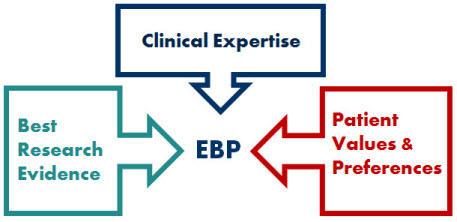The Implications of the Findings on Clinical Practice
The findings made have a significant implication for clinical practice. The findings show that using a multifaceted intervention may significantly reduce cases of central line associated bloodstream infections (CLABSI) (Dixon & Caver, 2010). It means that nursing practice within the intensive care units will have to be redefined to reduce such infections. The findings suggest that implementing a central venous catheter post-insertion care bundle is one of the ways of reducing the infection (Dixon & Caver, 2010). Nursing practice will, therefore, emphasize on this strategy as a way of keeping patients protected from infections during and after the surgical operation. Nurses must have knowledge of post insertion care bundle to ensure that they can work as per the new guidelines. It was also established that daily bathing with 2% chlorhexidine gluconate non-rinse cloths may significantly reduce CLABSI. As such, nurses will be expected to use this approach when handling postoperative patients.
Application of the Evidence in Caring For Patients
It will be necessary to apply Evidence Based Practice (EBP) in caring for the patients under the new system. Best research evidence, clinical expertise, and patient preferences and values must all be integrated when caring for the postoperative patients. The aim is to completely eliminate or significantly reduce CLABSI in the intensive care units. The figure below shows how the three forces must be integrated when offering patient care.

As shown in the figure above, the care will be based on three major factors. The first factor will be the best research evidence that has already been established in this study. It has been found that implementing central venous catheter post-insertion care bundle was critical in reducing CLABSI (Guerin, Wagner, Rains, & Bessesen, 2010). As such, nurses will use this information to inform their practice. They will strive to find a way of using the newly suggested strategy to improve the quality of care they give to their patents. It was also determined that daily bathing using a special soap prevents infections. Appling the new evidence is expected to transform the nursing experience and outcome in healthcare institutions.
The nurses are also expected to use their clinical experience. Years of clinical practice help in gaining knowledge on how to handle patients in intensive care units and to ensure that they are protected from any form of infection as much as possible. They need to use this knowledge to avoid making any mistakes that may jeopardize the condition of their patients. It is also strongly recommended that these nurses should seek to understand patients’ preferences and values. Before making any major decision in implementing the new research findings on a patient, it is appropriate to duly inform them of the planned action and the possible consequences of the process. The patient should be allowed to make a personal decision over the issue and in case they express displeasure, then the nurse may be forced to find an alternative course of action.
Designing a New Study to Be Used to Provide Additional Evidence
It may be necessary to conduct further investigation to determine the effectiveness of central venous catheter post-insertion care bundle in reducing CLABSI (Marra et al., 2010). Numerous studies have suggested that it is an effective way of preventing infections in the intensive care units. It will be necessary to have a further research that involves more participants before making a conclusion that it is an effective approach that can be implemented in clinical practice.
References
Dixon, J., & Caver, R. (2010). Daily chlorohexidine gluconate bathing with impregnated cloths results in statistically significant reduction in central line-associated bloodstream infections. American Journal of Infection Control, 38 (7), 817-21.
Guerin, K., Wagner, J., Rains, K., & Bessesen, M. (2010). Reduction in central line-associated bloodstream infections by implementation of a postinsertion care bundle. American Journal of Infection Control, 38(6), 431-433.
Marra, A., Rodrigues, R., Dura, M., Correa, L., Guastelli, L., Moura, D., Edmond, M., & Santos, O. (2010). Impact of a program to prevent central line-associated bloodstream infection in the zero tolerance era. American Journal of Infection Control, 38(6), 434-9.
O’Neil, C., Ball, K., Wood, H., McMullen, K., Kremer, P., Jafarzadej, R., Fraser, V., & Warren, D. (2016). A Central Line Care Maintenance Bundle for the Prevention of Catheter-Associated Bloodstream Infection in Non-ICU Settings. Infect Control Hosp Epidemiol, 37(6): 692–698.